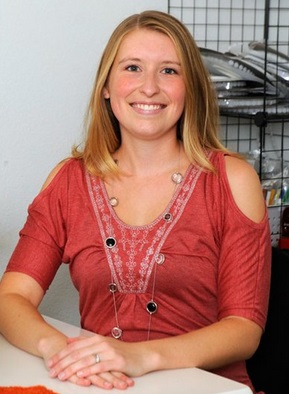
By Carrie Clark, CCC-SLP, Owner, Speech and Language Kids
Establishing a Functional Communication System
All children have the right to communicate. No disorder, disease, or physical limitation should be able to take that right away from them. For that reason, it is our obligation to make sure that all children with autism have SOME way to communicate with us. Speaking may be too hard for them so sometimes we need to come up with other ways of helping them communicate. Here’s how we can do that:
Step One: Will Speech Work?
The first thing that we need to consider for a non-verbal or minimally-verbal child with autism is whether or not speaking is real option for them. We can do this by asking the child to imitate basic speech tasks, like saying words or making sounds. If the child is able to say words or make sounds in order to get something that he or she really wants, then we can say that speaking is definitely the best way to go to help that child communicate with us. Speech is always the first option and we would love for all of our students with autism to speak to us. However, some children simply aren’t able to talk right now, but that doesn’t mean that we give up on them and don’t provide them with an alternative. If speech isn’t a viable option for the child you’re working with, move on to step two:
Step Two: Find an Alternative Means
Options for AAC Devices, Methods, and Systems:
Gestures/Body Language When the child uses natural gestures or body language to communicate with those around him. This often happens naturally but may need to be taught if the child isn’t even doing this.
Sign Language A formal sign language is used where the child forms signs with his hands that convey meaning. These signs are used by the child as well as by the adults who are communicating with the child.
Object Symbols Simple objects or small 3D models of objects are glued to cards or a board. The child then touches the object that represents what he wants. This is ideal for children with vision or cognitive problems.
Picture Boards The child is given a simple board with a selection of pictures. The child touches the picture that represents what he wants.
Picture Exchange The child hands a picture that represents what he wants to the communication partner.
Written Messages: The child writes or types a message on paper or on a computer/screen.
Single Button Voice-Output Devices The child is presented with a single button. When the button is pushed, a single message is spoken out loud (pre-recorded).
Multi-Button Voice-Output Devices The child is presented with a device that contains several buttons. Each button represents a different communication intent and the student pushes the button to hear the message.
Dynamic-Display Voice-Output Devices The child is presented with a device that has a touch screen full of buttons. When the child pushes a button, a message is spoken or the entire screen changes to present different buttons based on the one pushed.
Step Three: Teach the AAC Method
Once you’ve found what works, use these steps to teach it:
- Get Familiar with the Child’s Device
- Model use of the device around the child
- Encourage the child’s exploration of and attempts to use the AAC
- Have the device present at all times
- Set up opportunities for the child to use the device
- Get all adults on board
- Following Simple Directions
Make a list of common directions given to the child throughout the day
- Take/Make pictures of those directions
- Teach each direction individually
- Work those directions into daily routines using picture cues
- Fade the picture cues
- Work on following directions with more than one step
- Improving Imitation Skills
Start with imitation of easy, whole-body actions. Reinforce with highly preferred objects or activities Work on more complex actions like fine motor, speech/communication, or play (depending on what the child needs to work on) Work imitation into daily, functional activities
Basic Turn-Taking and Requesting
- Help the child take turns with adults by helping the child say or use AAC to communicate “my turn” when it’s the child’s turn.
- Increase the amount of time that the child will tolerate the adult having the item and get the child to communicate “my turn” independently
- Introduce turn-taking with another child including handing it over when the other child says “my turn” (or saying “in a minute” for older children)
- Work on games that require each player to wait for a turn and work on knowing whose turn it is.
For more information, visit Speech and Language Kids
There are no comments yet. Be the first to post!You must be logged in to post.
Stories and Strategies fo...















